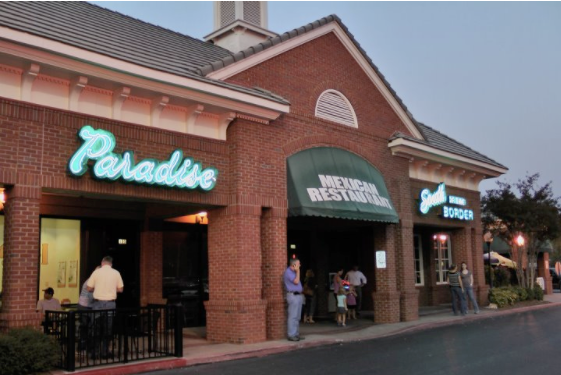Around the world restaurants are beginning to open up, and the hospitality industry is watching closely to learn how new health and safety protocols are being met, and how customers are responding.
We’ve been reviewing different resources, as well as talking to our clients to get a better understanding of what reopening has been like, and what other businesses can expect when their regional government opens up the hospitality sector.
Here’s some information that we feel will help restaurant and bar owners prepare for the new work environment.
What Public Health Professionals are Recommending for Reopening
A recent Forbes article, discussed what restaurant reopening has looked like so far, and what public health professionals are recommending for a safe, healthy and successful reopening to the public. Recommendations for the Food and Beverage industry include the following:
Adjustments to Shifts and Staff Management - Managers or owners need to implement set shifts for employees. This will help monitor and track those who could be exposed to Covid-19 should a staff member or guest be affected while at your establishment. With this being said - temperature checks should be mandatory for all staff at the beginning of their shift. If anyone has a fever or abnormal temperature they should be sent home immediately.
Sanitization Stations and Constant Disinfection - Restaurants and bars should implement sanitization stations at all exits and on each table and high traffic surfaces should be disinfected more frequently.
Disposable Menus and Touchless Ordering - Reusable menus need to be a thing of the past, therefore, bars and restaurants need to implement an alternative for their guests that will reduce the amount of contact. One of these options could be a disposable menu. It’s not the most environmentally friendly option, so we would recommend using paper or recycled paper. These menus can be disposed of after one use, limiting the amount of contact.
Another option would be to implement a touchless ordering system - either through an app, text or phone call. Whether the app takes the order or the menu is on your website, customers can then text in their order or call it in. This will also reduce the interaction with the servers and your guests.
Touchless Payment Options - Does your establishment have a touchless payment system? If not, then implementing a touchless payment processing system would be beneficial. How your payment process works and the options you offer should be communicated to guests when they arrive.
Rules Around Masks - This is a tricky one as it’s hard to have customers wearing masks when they are at your establishment to eat. Implementing a rule that guests must wear a mask until seated, at which point their masks can be removed is an initiative that will assist in preventing the spread. However, wearing a mask must be an initiative that all staff abide by, whether they are front-of-house staff, serving staff or working in the kitchen.
Feedback from Industry Experts
In ‘How To Reopen Restaurants And Bars’ Chloe Servino, also reported on what industry experts residing in the opened regions are experiencing. Some additional ideas include:
Know Your Limits, Stay Within Them - Don’t bite off more than you can chew. Be sure to create a plan and workflow for how the shifts will run and stay organized. If you don’t feel comfortable reopening once the ban has been lifted in your area, then don’t reopen. Set up your bar or restaurant in a way that you trust and create your plan. Once you feel comfortable, then reopen - if you don’t go with your gut about this then you could end up overwhelmed and have chaos on your hands.
Training Staff on Protocols - We’ve touched on this in past emails, but we cannot stress the importance of training your staff on the new setup and protocols. You shouldn’t have a staff member start a shift without being walked through your establishment, front to back and taught the new protocols. We would also recommend training your staff on cleaning and disinfection procedures, what products to use and how often surfaces need to be cleaned.
Installing Plexiglass - Installing plexiglass in high-traffic areas, such as hostess stands and in between booths will help in preventing the spread of any germs, in turn keeping both your staff and guests safe.
Eliminate the Hand-held Buzzer - The goal is to reduce the number of items and surfaces that are constantly touched by guests and staff, this includes the infamous hand-held buzzers that restaurants offer out for guests who are waiting for a table. We would recommend implementing a reservation system and making it mandatory in order to dine at your establishment. If you wish to continue offering guests the option to wait, implement a system that texts the guest when their table is ready and ask them to wait outside to free up your entranceway.
Avoid Reusable or Self Serve Options for Condiments - like the buzzer, eliminate items like self-serve condiments - replace them with either single-use condiment packages or have the kitchen include them in disposable containers on the side of the dish
What has the reopening experience been like for Restaurant and Bar Owners?
Now that we’ve touched on what industry experts are recommending, let’s talk about what bar and restaurant owners have experienced since their establishments have reopened.
Our Atlanta Franchisee, Erin Ebdon, reached out to a client to get a sense of just that. Justin Barrett, co-owner of Paradise Grille and Paradise South of the Border in Marietta, Georgia, gave us a sense of what he has experienced so far since the shutdown, and since having reopened their doors.
Business Model: When the dine-in ban was initially announced, Justin and the management team initially considered closing the two restaurants for the duration of the ban. However, after giving more thought, they decided to work through using a “to-go only” business concept. The team re-opened on a Friday night and were quickly overwhelmed with orders. They realized that the plan they had laid out was not working. They managed to get through the night, but spent hours the next day re-working the staging areas, order organization, ticket printers, and staff workflow to prevent the previous night’s problems. They opened for business that evening and were happy to find that the corrections had improved the process.
Staffing: It was important for Justin to keep on as many of the kitchen staff as possible so they decided it was time to update the interior décor. The staff painted and did small face-lift projects to fill in hours they would have worked in the kitchen. Justin also worked with other tradespeople to barter services for refinished floors and larger handyman-type jobs. These jobs would have been difficult, or impossible, to complete during normal operations.
Their current challenge is to begin to staff back up. As many employers are discovering, it is difficult to bring back former employees who are currently making more money on unemployment than when they were working. Justin said they will continue to hire as they can and hope that more former employees realize it is time to begin working again.
Community Contact: They worked with their marketing company and increased their posts of video, pictures, food/drink promotions on Facebook. To expand their community outreach, they set up a Go Fund Me which was used to provide food for hospital staff and the area’s homeless. Management also encouraged patrons to enjoy their to-go food and drinks in the parking lot spaces nearest the building. This allowed live musicians to entertain customers from the patio and earn tips electronically.
What’s Next?: Justin is optimistic for the future now that on-premise dining is again allowed. He believes that the good work they did building their “to-go” business will continue to pay off as that side of the business grows. Also, he will continue to use the increased social media posts to promote the restaurants since the results were so positive.
It is evident that the challenge will continue as more regions reopen. But with experience, you will quickly learn what is and isn’t working for your bar and restaurant. As long as you’re able to quickly adjust, you will begin to get the upper hand of your routine again.
If you have questions about reopening or need some assistance please don’t hesitate to reach out. We want to make sure you and your establishment are as successful as possible.












